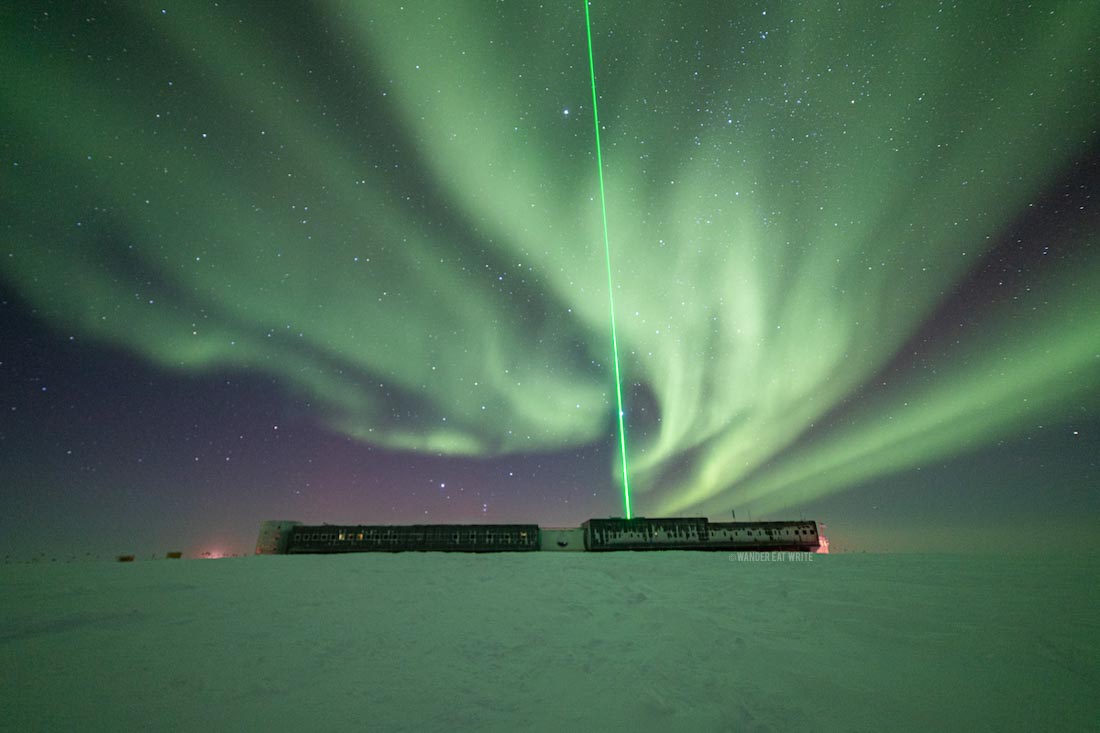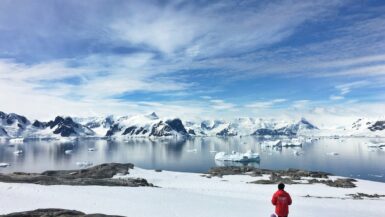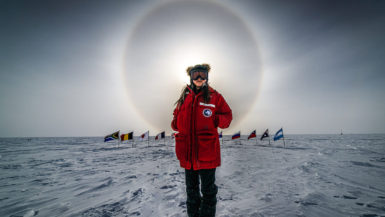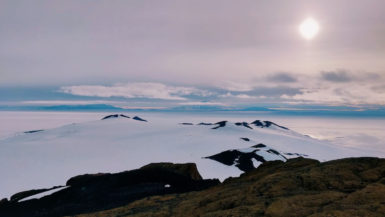Does Antarctica have Northern Lights?
This is a question I get asked a lot since I lived at the South Pole, Antarctica for a year.
While we did see auroras regularly at the bottom of the world, they are not called the Northern Lights or Aurora Borealis.
Does Antarctica Have Northern Lights?
Antarctica doesn’t have Northern Lights, but it does have Southern Lights– also called Aurora Australis.
Although many people mistakenly use the term “Northern Lights” to describe all auroras, the names for auroras in the Northern and Southern Hemispheres are not the same.
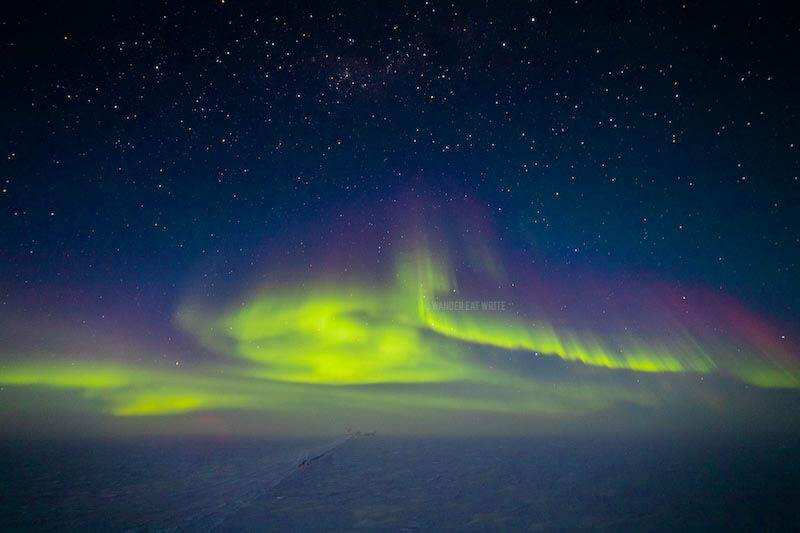
Antarctica Northern Lights VS Southern Lights
So why aren’t “Antarctica Northern Lights” a thing?
Because Antarctica is in the Southern Hemisphere.
Auroras in the Southern Hemisphere are referred to as the Southern Lights, or Aurora Australis.
The auroras seen in the Northern Hemisphere in places like Alaska or Finland are called the Northern Lights, or Aurora Borealis.
Remember: arctic means north, and antarctic means the opposite (south).
When To See The Southern Lights In Antarctica
The Southern Lights (Aurora Australis) can be seen in Antarctica during the austral winter.
This is between February and October when the continent experiences its months-long winter.
At the South Pole, the southernmost point on Earth, there’s no sunlight for six months.
This is the best time to see the Southern Lights in Antarctica.
During the austral summer, the sun is up 24/7 so there’s no darkness to observe any Antarctica auroras.
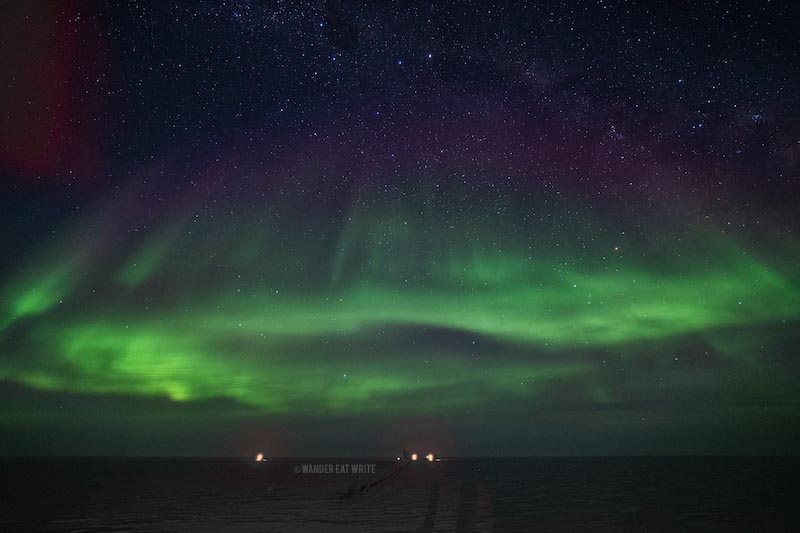
How To See The Aurora Australis (Southern Lights)
Want to check out the Aurora Australis?
The good news is that you don’t have to go all the way to Antarctica to see the Southern Lights!
💡 TIP: You’ll want to be as far away as possible from any light pollution (city lights, headlights, etc.) for the best aurora views
Where to See the Southern Lights (Besides Antarctica)
While generally the farther south you go, the better the Aurora Australis gets, you can still get a glimpse of the beautiful lights at the following destinations:
🇦🇷 Ushuaia, Argentina
Ushuaia, known as the world’s southernmost city, is one of the best places to witness the Southern Lights.
Located at the southernmost tip of South America, it’s the closest point to Antarctica that anyone can be, which makes it a prime Aurora Australis viewpoint.
🇦🇺 Tasmania, Australia
Tasmania, Australia is another fantastic location to catch the lights due to its southern latitude and clear, dark skies.
South Arm Peninsula and Satellite Island are popular spots for stargazing and astrophotography, making it perfect for seeing auroras as well.
🇳🇿 Stewart Island, New Zealand
New Zealand’s Stewart Island is located south of the South Island, and is actually the southernmost Dark Sky Sanctuary in the world.
In fact, the Maori name for the island, Rakiura, means “glowing skies”– a nod to the Aurora Australis visible here.
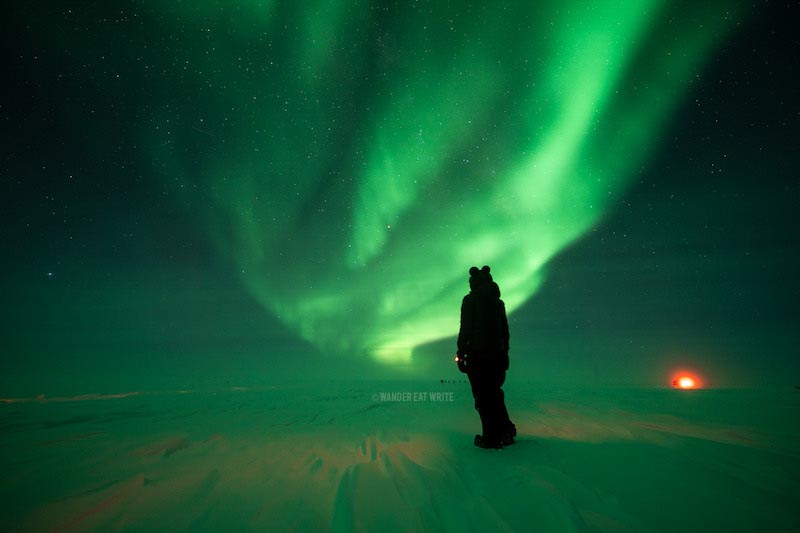
Aurora Australis: What to Expect
While seeing the Aurora Australis is indeed exciting, it’s important to keep expectations realistic as what you usually see in person is typically NOT the same as in photographs.
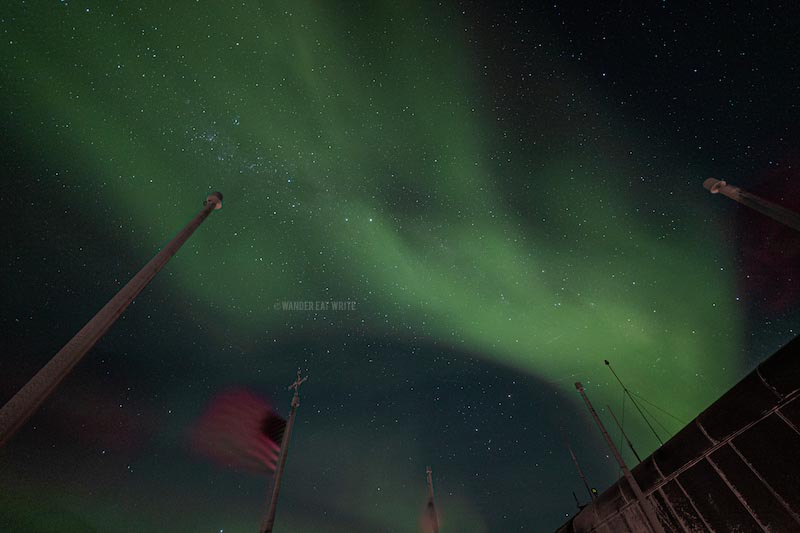
Vibrancy
When you think of seeing auroras, you probably think of bright green lights in the sky.
While this is sometimes true, most often what you’ll see with the naked eye are faint yellow or green cloud-like shapes.
The reason you’ve seen vivid photos of the Aurora Australis or Aurora Borealis is because photographers are able to take long-exposure shots for more vibrant images.
Does this mean you won’t get good photos with just a smartphone?
Not necessarily.
It just depends on how strong the auroras are.
Just know that what you’ll see in person will most likely not be the same as in photos.
Location
If you’re aurora hunting at the southern tips of South America or Australia, note that they’ll be close to the horizon, not overhead.
Only in Antarctica will the Aurora Australis be up high in the sky.
Likelihood of Seeing the Auroras
In order for auroras to be visible, you need low light pollution and clear skies.
Just because the aurora forecasts say there’s a high likelihood of aurora activity, it won’t matter if the weather isn’t cooperating or you’re in an area with a lot of lights.
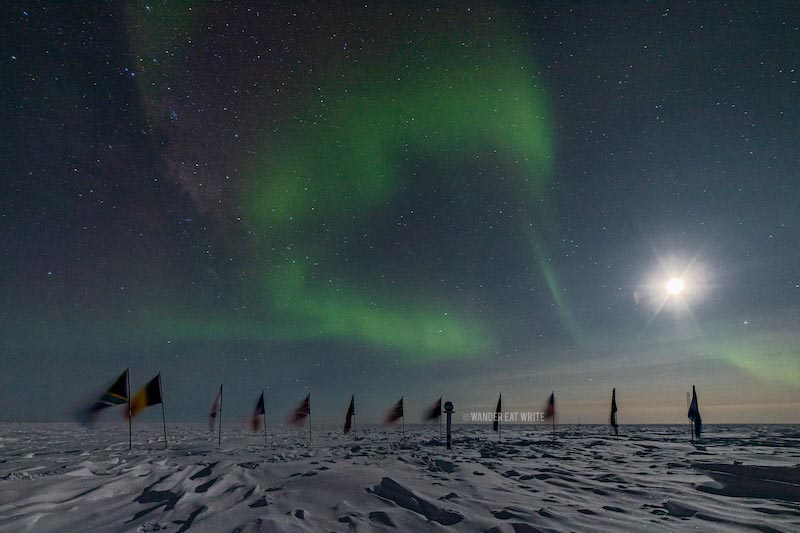
Where to See the Southern Lights (Antarctica)
There are two options for seeing the Southern Lights in Antarctica: through a sightseeing flight or by working at the Antarctic research stations.
Southern Lights Sightseeing Flights
Chimu Adventures and Antarctica Flights are the only companies that offer this exclusive winter sightseeing trip.
While you get to set foot on the continent, you will have the rare opportunity to view the Aurora Australis from the sky.
Best Antarctic Stations for Aurora Australis
Since the Aurora Australis forms an “aurora ring” over the magnetic South Pole, the best places in Antarctica to view the lights fall under this perimeter.
These include the following stations:
🇺🇸 Amundsen-Scott South Pole Station
🇦🇷 Belgrano II Base
🇯🇵 Showa Station
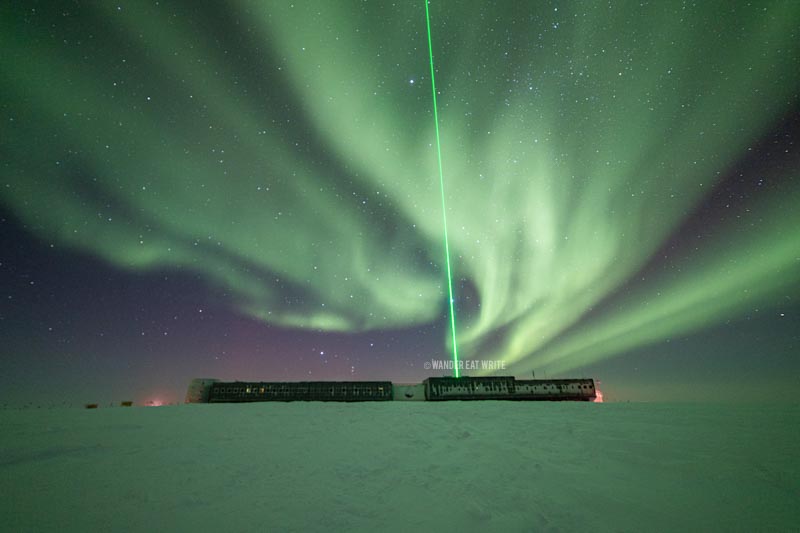
Work in Antarctica
If you’re dying to see the Aurora Australis, or Southern Lights, in Antarctica you’ll need to get a job in Antarctica.
Working in Antarctica not only pays you to live there– but it’s the only way to see the Southern Lights in Antarctica while on the continent.
Tourist cruises can’t access Antarctica during the dark winter months, and the aurora flights can’t land on the continent or even get close (they only fly to the perimeter of the Antarctic Circle).
By getting a job at an Antarctic research station, you have the rare opportunity to experience life in Antarctica that no money can buy at the moment.
💡 TIP: Amundsen-Scott South Pole Station is the best station for viewing the Aurora Australis (Southern Lights) because the aurora circle goes directly over the top.
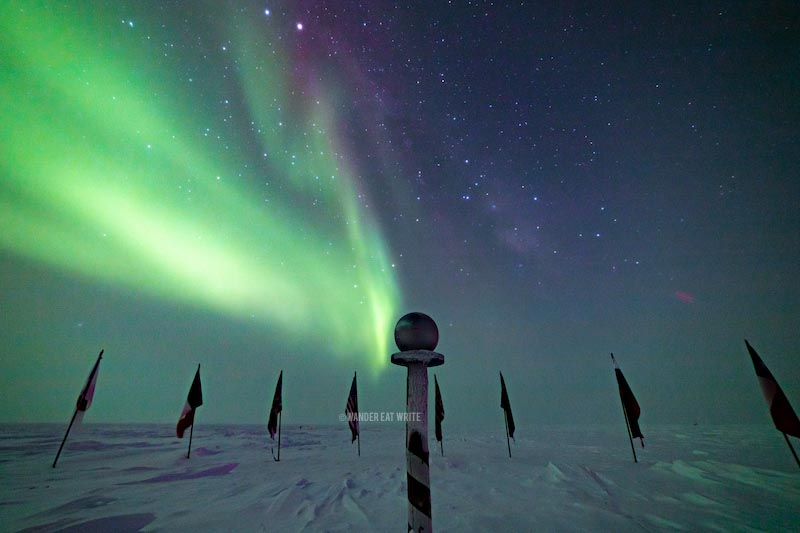
What it’s Like Working in Antarctica
I’ve had the opportunity to work two seasons at McMurdo Station and three seasons at the South Pole Station, the last two of which were part of a full-year residency.
To sum up what it’s like working in Antarctica: it’s hard work, you’ll often be cold, but it’s an experience of a lifetime.
Read More: How I Got Paid to Live in Antarctica
Summer vs. Winter
Working at an Antarctic research station during the summer is usually the busiest as personnel are often coming and going.
At McMurdo Station, the population can top out at 1000+ people in the austral summer months (October-February).
This is the time when most of the research, construction improvements, and resupply happen as it’s the warmest time of the year.
Most stations hunker down during winter as it’s typically too cold to fly.
A skeleton crew sticks around to continue projects but life runs a little slower after the summer population leaves.
The isolation and darkness often lead to Winterover Syndrome, which is a constellation of behavioral disturbances seen in polar winterover crew.
This includes absentmindedness, irritability, and depression.
Spending a winter in Antarctica, however, is often a goal for many who go down to the ice (Antarctica), and we carry the “Winterover” title with great pride.
Wintering at the South Pole— and being the first woman of Japanese heritage to do so– was definitely a crowning achievement for me.
Cruise to Antarctica
If you’ve ever wanted to visit Antarctica as a tourist, taking a cruise is probably your best option.
There are a variety of cruise lines and excursion operators that offer trips to the White Continent.
Here are some of the most popular Antarctica cruises broken down by category:
⚓️ Luxury: Silversea Cruises
⚓️ Expedition: Lindblad Expeditions
⚓️ Budget: Princess Cruises
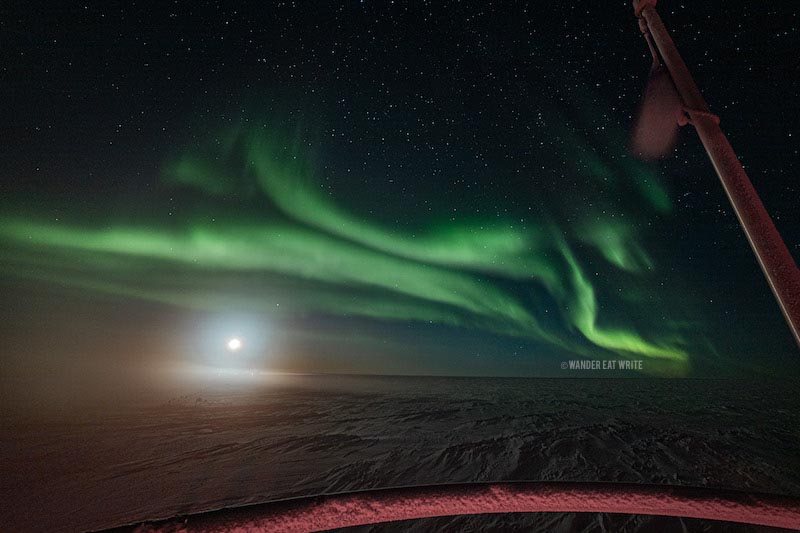
Visiting Antarctica: FAQs
Still have some burning questions?
This next section covers some frequently asked questions about Antarctica.
What causes the Aurora Australis in Antarctica?
Auroras are are caused by energized particles from the sun interacting with gasses in the atmosphere.
The lights occur around the magnetic North and South Poles, which is why you’re more likely to see auroras the farther north or south you are.
What are the Northern Lights called in Antarctica?
The auroras in Antarctica are called the Southern Lights, or Aurora Australis.
The reason why they’re not called the Northern Lights is because Antarctica is in the Southern Hemisphere, thus the Southern Lights.
The Northern Lights are auroras in the Northern Hemisphere in areas such as Alaska and the Arctic.
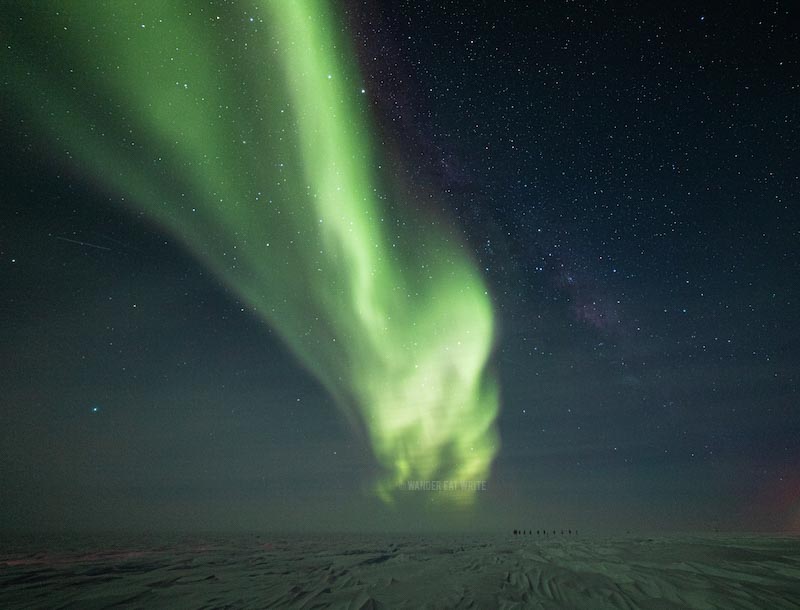
Does it ever get dark in Antarctica?
Yes, Antarctica does experience darkness.
The length of darkness, however, will depend on where in Antarctica you are located.
Areas above the Antarctic Circle (66° South) experience day and night like most of the world.
But below the Antarctic Circle there are polar nights, which are the extended periods without daylight.
The further south you go, the longer the darkness lasts.
For example, McMurdo Station at Ross Island is located at 77° South and experiences the polar night between April through August.
At the South Pole (90° South), there is no sun between March and September.
Are there polar bears in Antarctica?
No, there are no polar bears in Antarctica.
You’re probably thinking of the Arctic.
Animals that do live in Antarctica, however, include:
- Seals
- Whales
- Skua birds
- Penguins
Final Thoughts: Antarctica Northern & Southern Lights
Antarctica doesn’t have Northern Lights, but it does have Southern Lights.
The auroras seen in the Southern Hemisphere where Antarctica is located are correspondingly known as the Southern Lights.
So the next time you hear someone talk about the “Antarctica Northern Lights,” you’ll know they’re probably referring to the Aurora Australis.
